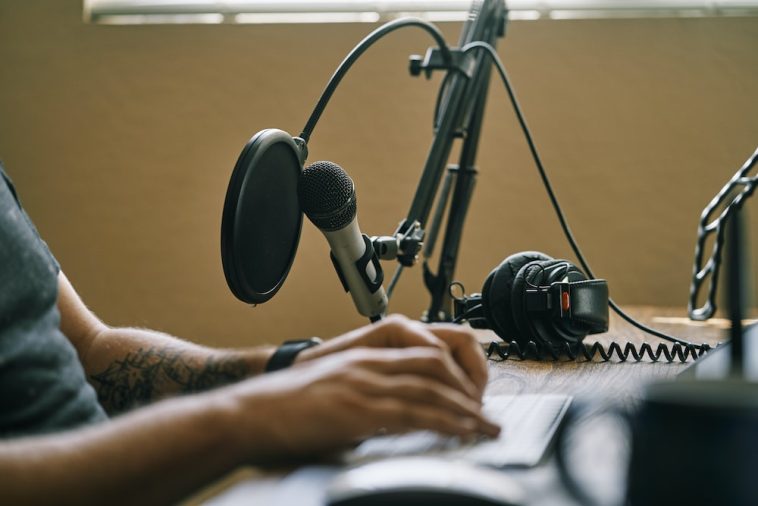Introduction.
Creating a standout YouTube video goes far beyond just having eye-catching visuals. I’ve learned that clear, engaging voiceovers can transform a video from average to amazing.
Good voice narration adds personality, builds trust, and guides your audience through your content.
Even if you’re working with a tight budget, free AI tools can help you produce high-quality voiceovers that sound professional.
In this post, I’ll walk you through how I use free AI tools to create crisp and natural-sounding voiceovers, share some practical tips, and answer common questions along the way.
Why Quality Voiceover Matters
A quality voiceover does more than just narrate your video—it connects you with your audience. Did you know that over 2 billion people visit YouTube every month? (Statista) When millions of viewers are scrolling through content, a clear and engaging narration can be the difference between a viewer watching your entire video or clicking away.
A well-executed voiceover builds a personal connection and keeps viewers engaged, making your content more memorable.
Voiceovers also add clarity to your message. If your video includes complex ideas or step-by-step instructions, a calm, articulate narration can help your audience follow along more easily.
With free AI tools available today, producing this kind of quality narration is both accessible and cost-effective.
Getting Started: Preparing Your Script
The process always begins with a well-prepared script. I spend time writing a script that is conversational, friendly, and easy to understand. Here are a few tips I follow:
- Keep it simple: Use clear language that your audience will understand.
- Be conversational: Write as if you’re talking to a friend.
- Plan for pauses: Mark places in the script where a slight pause will help emphasize an idea.
A clear script not only makes the recording process easier but also ensures that your voiceover sounds natural and engaging.
Choosing the Right AI Tool
Several free AI tools can turn your text into a high-quality voiceover. I’ve experimented with a few, and here are some options you might find useful:
- TTSMP3: This tool lets you convert text to speech for free. It offers several natural-sounding voices, and I’ve found it simple to use.
- NaturalReader Online: Another excellent free option that provides different voice styles. It’s great for trying out various tones before finalizing your choice.
- Google Cloud Text-to-Speech: While this one has a free tier, it offers advanced options if you need more customization. Just be sure to check the usage limits.
Before settling on a tool, I recommend testing a few. Listen to the output and see which one feels most natural for your content.
How Do I Create High-quality Voiceover For YouTube Videos With Free AI Tools?
Here’s a breakdown of my process to create a high-quality voiceover using free AI tools:
Write Your Script.
As mentioned, begin with a script that sounds natural. Keep your tone friendly and clear. Once your script is ready, read it aloud to ensure it flows well.
Select Your AI Tool.
Choose one of the free AI tools. I typically start with TTSMP3 or NaturalReader because of their simplicity and the quality of their voices.
Input Your Script.
Copy and paste your script into the tool. Before converting, play around with settings like speed and pitch if the tool allows. This step helps you achieve a tone that matches your video’s mood.
Generate the Voiceover.
Let the tool convert your text to speech. Listen carefully to the generated audio. If something sounds off—maybe the intonation is too robotic or the pace is too fast—make adjustments to your script or the settings in the tool.
Edit and Enhance.
Once you have your basic voiceover, you might need to do some editing. Free audio editing software like Audacity can help remove any background noise, adjust volume levels, or smooth out transitions.
Sync with Your Video.
Finally, import your polished audio into your video editing software. Ensure that the timing matches your visuals perfectly. Sometimes, a few tweaks in the editing phase can greatly improve the overall flow.
Tips for a Natural and Engaging Voiceover
- Test Multiple Voices: AI tools often offer a range of voices. Experiment with different ones to see which best fits your video’s tone.
- Listen Critically: When you generate the audio, listen to it as if you were your audience. This practice helps you catch any mistakes or awkward phrasing.
- Practice Patience: Getting the perfect voiceover might take a few tries. Don’t be discouraged if it’s not perfect on the first attempt.
Remember, the goal is to make the narration feel as natural as possible. While AI tools have come a long way, sometimes a few tweaks here and there can make a big difference in how your voiceover is received.
Incorporating Your Voiceover into YouTube Videos
After creating your voiceover, the next step is integrating it into your video. Here’s how I approach this part:
- Match the Tone: Make sure that the visuals and the audio have a cohesive feel. The tone of the voiceover should match the style of your video content.
- Background Music: Sometimes, a subtle background track can enhance the mood. However, the music mustn’t overpower your narration. I often lower the volume of the music during the voiceover sections.
- Timing is Key: Sync the voiceover precisely with the visual cues. This alignment keeps your audience engaged and makes your video feel more professional.
- Review and Revise: Before publishing, I always review the entire video. Watching it from start to finish helps me spot any timing issues or areas where the voiceover could be improved.
Frequently Asked Questions
Do I need technical skills to use these AI tools?
Not at all. Most free AI voiceover tools are designed to be user-friendly. Even if you’re new to voiceover production, you can generate high-quality audio with just a few clicks.
How do I choose the best voice for my content?
Try out different voices offered by the tool. Listen to how each one sounds with your script and pick the one that best matches the personality and tone of your video.
Is editing really necessary after generating the voiceover?
Editing can make a big difference. While some AI tools produce excellent results, a bit of editing in Audacity or another audio editor can smooth out any rough edges and remove background noise.
Can I legally use these free AI tools for my YouTube videos?
Most free tools allow you to use the generated voiceovers for personal and commercial projects, but always check the specific terms of use for each tool to ensure you comply.
Additional Resources
If you’re interested in exploring more about voiceover production and AI tools, here are a few links that I find really useful:
- Audacity: Download and learn about Audacity. It’s a free audio editing tool that’s great for refining your voiceover.
- TTSMP3: Try out TTSMP3. This tool converts text to speech with multiple voice options.
- NaturalReader: Visit NaturalReader Online. It’s another accessible option for creating voiceovers.
- Google Cloud Text-to-Speech: Learn more about Google’s offering. Although it has a free tier, it’s a powerful tool if you need advanced features.
Conclusion
Using free AI tools to create high-quality voiceovers is a game changer for anyone looking to produce engaging YouTube videos on a budget.
By investing time in crafting a solid script, experimenting with different voices, and fine-tuning your audio with editing software, you can produce professional-sounding voiceovers without spending a dime.
I’ve seen firsthand how these tools can elevate a video, making it more appealing and accessible to a wider audience.
What are some techniques or free AI tools you plan to try next to improve your YouTube voiceovers?





GIPHY App Key not set. Please check settings